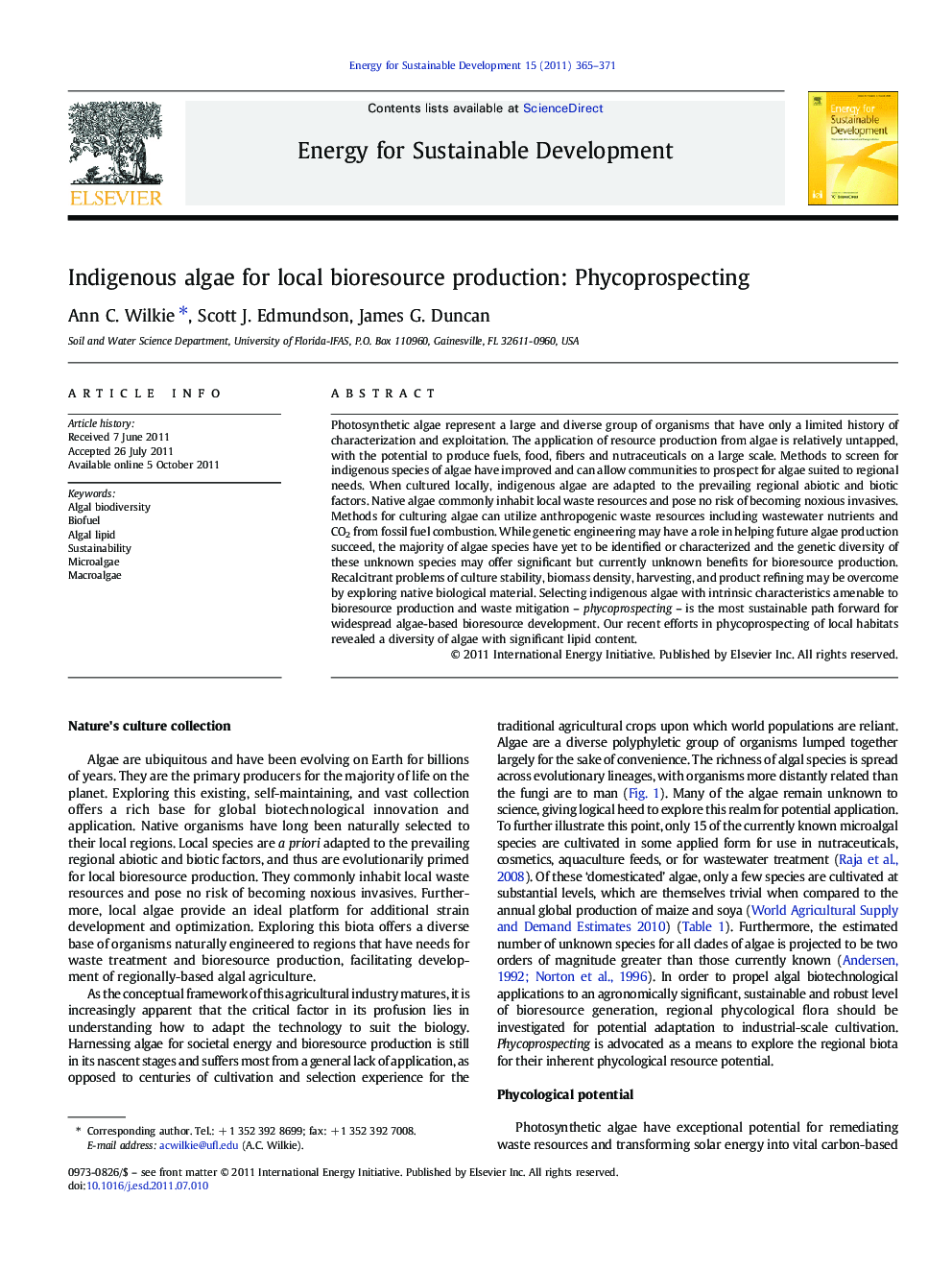| Article ID | Journal | Published Year | Pages | File Type |
|---|---|---|---|---|
| 1047015 | Energy for Sustainable Development | 2011 | 7 Pages |
Photosynthetic algae represent a large and diverse group of organisms that have only a limited history of characterization and exploitation. The application of resource production from algae is relatively untapped, with the potential to produce fuels, food, fibers and nutraceuticals on a large scale. Methods to screen for indigenous species of algae have improved and can allow communities to prospect for algae suited to regional needs. When cultured locally, indigenous algae are adapted to the prevailing regional abiotic and biotic factors. Native algae commonly inhabit local waste resources and pose no risk of becoming noxious invasives. Methods for culturing algae can utilize anthropogenic waste resources including wastewater nutrients and CO2 from fossil fuel combustion. While genetic engineering may have a role in helping future algae production succeed, the majority of algae species have yet to be identified or characterized and the genetic diversity of these unknown species may offer significant but currently unknown benefits for bioresource production. Recalcitrant problems of culture stability, biomass density, harvesting, and product refining may be overcome by exploring native biological material. Selecting indigenous algae with intrinsic characteristics amenable to bioresource production and waste mitigation – phycoprospecting – is the most sustainable path forward for widespread algae-based bioresource development. Our recent efforts in phycoprospecting of local habitats revealed a diversity of algae with significant lipid content.
► Algae represent a diverse group of organisms with bioresource production potential. ► Phycoprospecting is the selection of indigenous algae with favorable characteristics. ► Native algae are pre-adapted to the prevailing regional abiotic and biotic factors. ► Phycoprospecting offers a sustainable approach to develop algae-based bioresources. ► Local phycoprospecting showed a diversity of algae with significant lipid content.
